Vhardik - What Happens On The D Day
Jun 02, 2019 • 848 views
As mentioned in the earlier article, Amchigele vardika is quite a long process. It mostly starts early in the morning (except for Godhooli Lagna) and ends at around 1 or 2 in the afternoon.
There are various rituals during the GSB wedding, I will be discussing only the most important ones due to word limitations. Here’s a list of the main rituals on the day of an Amchigele Vhardik.
1. Udida muhurt.
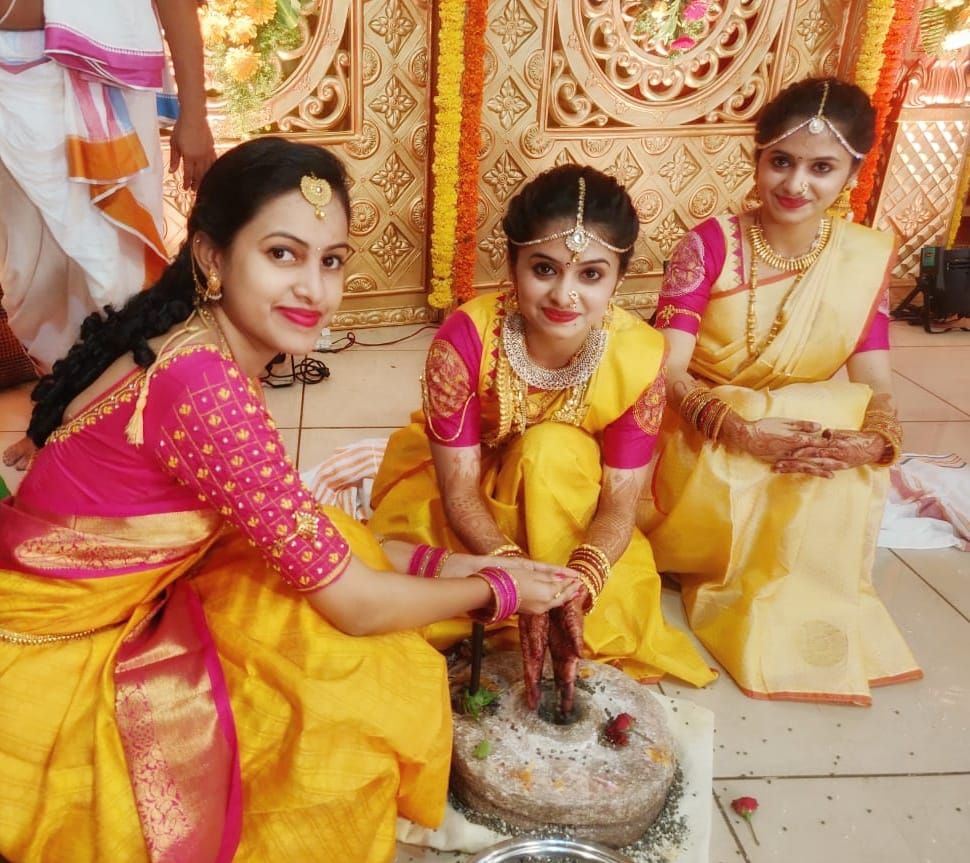
Udidu translates into blackgram. In this particular ritual, the bride and groom (along with their deddo/deddi) grind a blackgram in a stone grinder. The ladies of the respective families also join in this ritual. This is supposed to be a way in which the bride learns to cook for her new house as black gram is used extensively by South Indians for Idly, dosas, vadas, etc. The groom’s mom also joins the bride’s udida muhurth to see whether the bride is doing it right. The groom participates in the ceremony so that he learns how to cook food in case of his wife’s illness. Well, I told you our weddings are pretty progressive.
2. Kashi yatra.
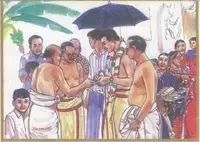
There are many rituals after Udida muhurth like Kajjal lavche, Pooja, etc. The groom gets fed up of so many rituals and decides to go to Kashi and become celibate. He sets for his journey with a stick, a potli and an umberella(the deddo holds the umberella). The bride’s father then goes and convinces the groom to come back and marry his daughter. The bride’s father also gifts the groom a ruppe- sandook (a silver thali with thatti – chipputa – mudra, etc) that the groom has to use for his sandhi pooja here after.
3. Mantap Puja
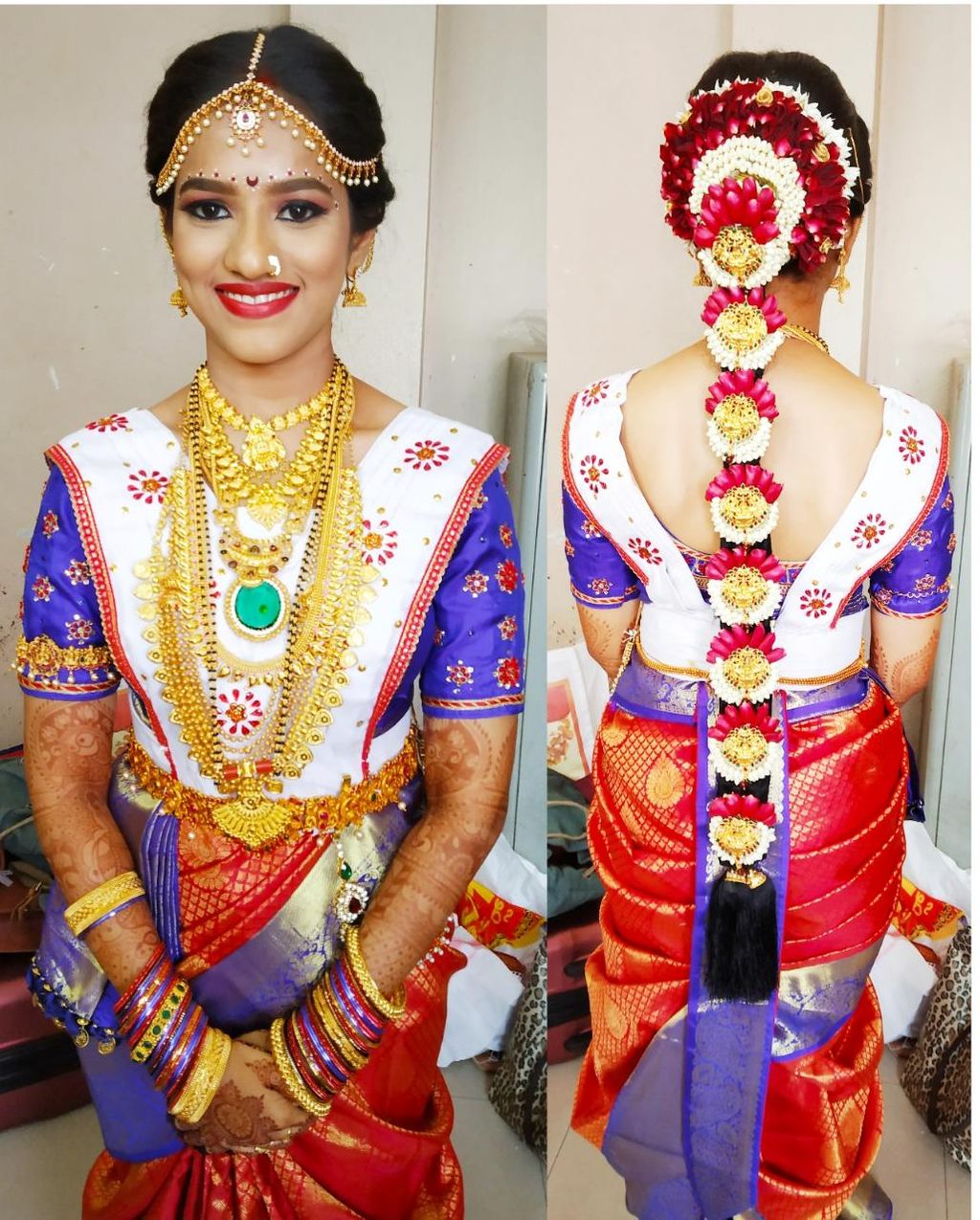
The groom is then sent to change into wedding clothes while the bride comes for her mantap puja. The bride worships the wedding mantap with her mother. This ritual is exclusive only to the bride and her mother in which the mother ties daaremani (a chain of black beads and gold) around the bride’s neck. After this the bride is ready for the lagna. For mantap puja, the bride wears Aadvarla (a white cloth worn instead of pallu) and wears her saree in navari style (khaasu maarnu)
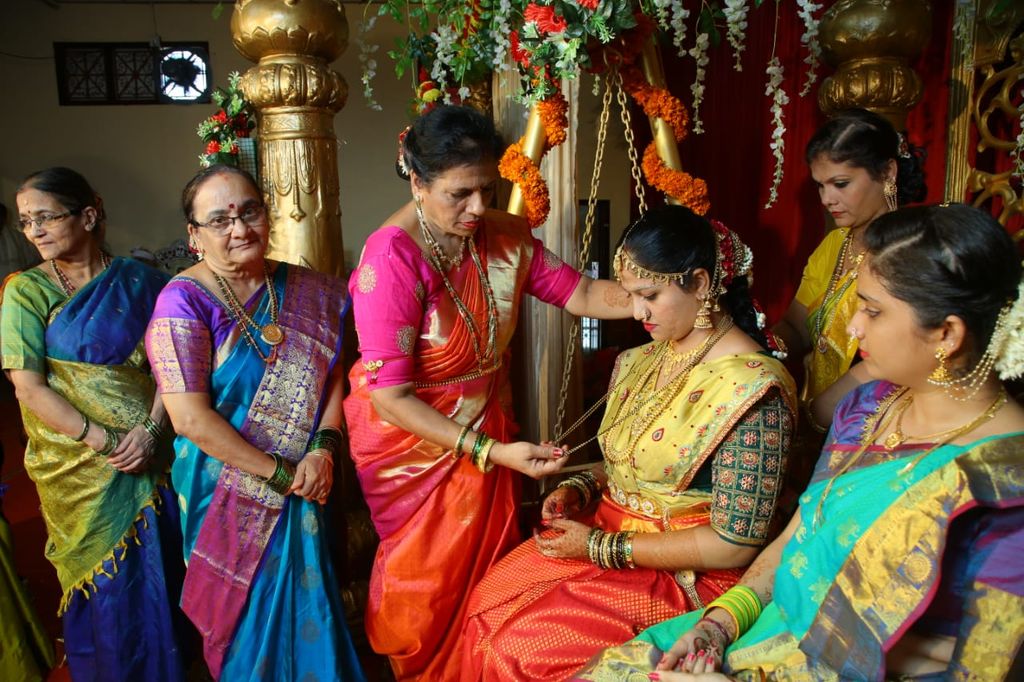
4. Varamala.
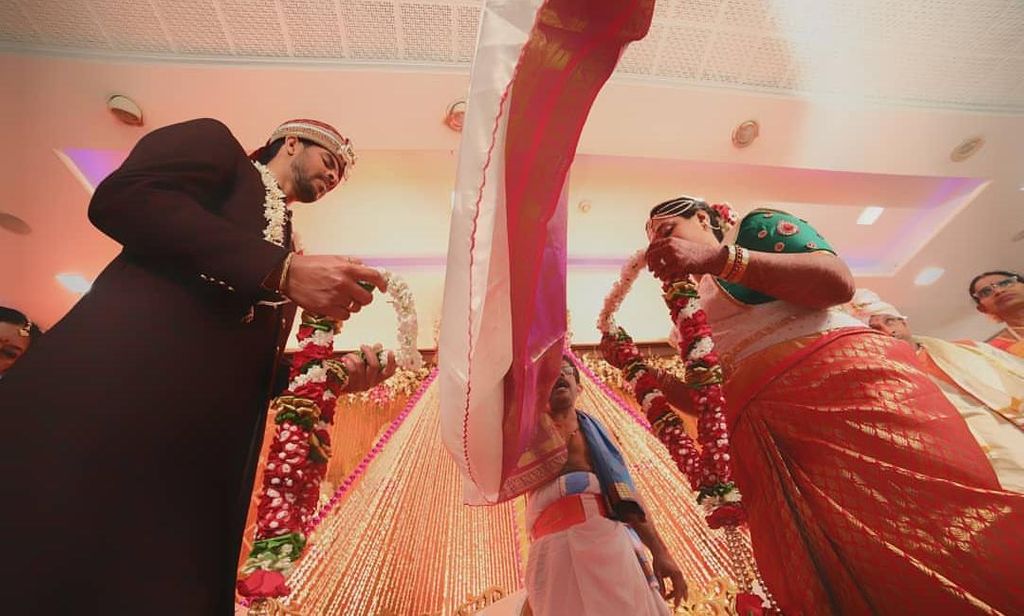
The groom enters the stage and waits for the bride, while everyone waits for the bride too. The bride arrives with her maternal uncle who carries her to the mantap. After the bride and groom are on the stage, varamala starts. The antarpatt is held by priests separating the bride and groom as the priests chant mantras, after which the bride and groom exchange garlands.
5. Daaruvattuche (kanyadaan)

The most emotional ritual of all. The bride’s father holds the brides hand and places it in the hands of the groom as the bride’s mother pours milk and water containing coins. This is meant to be a ritual in which the bride’s father is giving away his daughter to the groom.
6. Kasthali
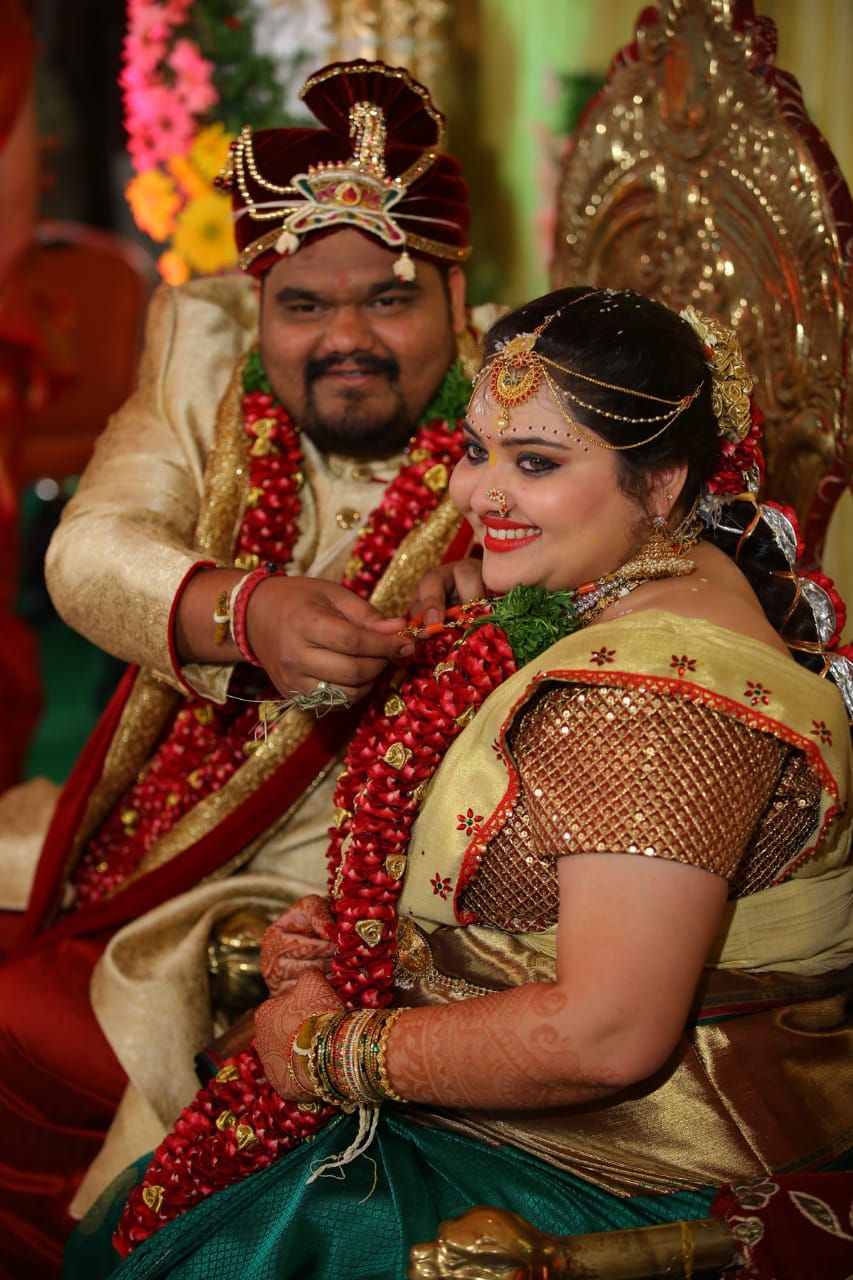
The bride and groom now sit together as the groom ties the Kasthali or Mangalsutra around the bride’s neck, thus finally making them husband and wife. The kasthali is made of corals and gold.
7. Layi homa
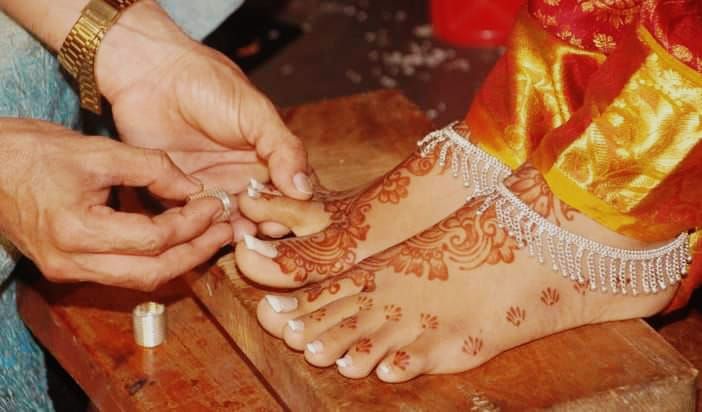
Also known as Layyi shawl is a ceremony performed by the couple and the bride’s maternal uncles and brothers. Layi translates to puffed rice. Laayi is passed on from the youngest brother to the eldest uncle and to the hands of the bride that is held by the groom. This is repeated 5 times after which, the eldest uncle puts silver toe rings on the bride’s toes.
8. Saptapadi
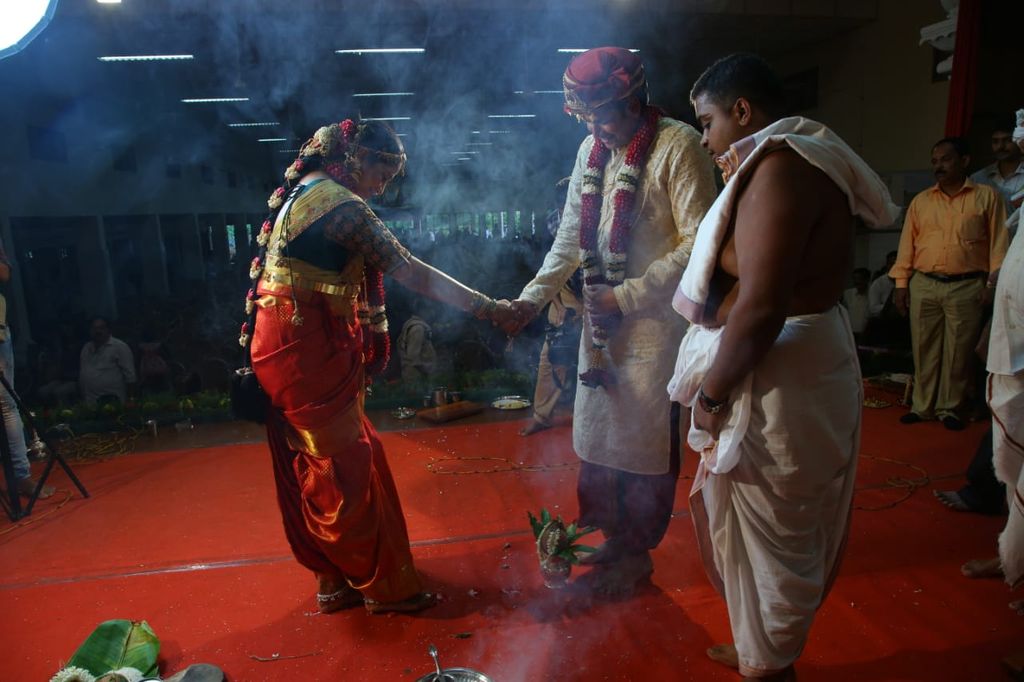
There are seven mounds of rice between the bride and groom, and the bride comes towards the groom by stepping on the mound of rice one at a time as the priests chant mantras. This technically marks the end of the wedding as after this, in the rest of the pujas or homas the couple is addressed as husband and wife.
